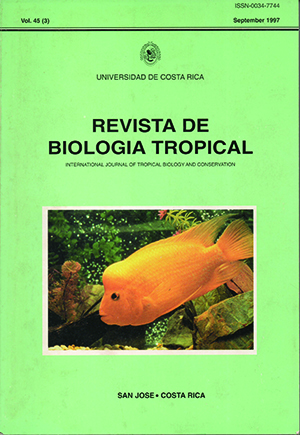Abstract
Based on field colIection in freshwater bodies (1992 to 1996) in the Mexican State of Quintana Roo, Yucatan Península, as well ason official reports from the former Mexican Ministry of Fisheries, this work documents the distribution of tilapia in the state, and its relative abundance as a function of water body afea. Introductions oí" tiJapia in Quintana Roo began in 1974; !hese were mainly extensíve 'cultures (direct releases) until 1982, when floating cages began to be used. The fish were coIlected with throw, seine, and hand nets, plastic bags OI hook and line, as !he local conditions allowed; each fishing gear provided a separate abundance estímate for a given site. Water body area was calculated from maps (1:50 OOO) by clipping the lake area in homogeneously !hick paper and weighing it to !he neares! 0.1 mg. Temperature, conductivity and dissolved oxygen, as well as the number of native fish species, were recorded, but these variables showed no relationship to tilapia abundance or distribution; however, tilapia was not found in the wild at water conductivities aboye 5500 mmho/cm. Escape from floating cages, perhaps caused by crocodiles or water level elevations, was found in 50% of the intensive culture sites visited. Moreover, tilápia (Oreochromis mossambicus and hybrids, probably with O. niloticus) was captured in four sites where it had not been officially introduced; two of these maybe natural invasions from nearby lakes during wetter cyc1es, the others (lakes Cobá and Makanxoc) probably are unofficial introductions. Tilapia was not frequent throughout Quintana Roo (4.2% of 237 water bodies visited), but it was dominant (>20% of !he total number of individuals) in most localities where it appeared, inc1uding lake Chichancanab, habitat of an endemic Cyprinodon species flock. The correlation between the logaritbm of water body area and tilapia re1ative abundance was significantly negative, possibly meaning that smaller sites were more vulnerable to tílapia proliferatíon.##plugins.facebook.comentarios##

This work is licensed under a Creative Commons Attribution 4.0 International License.
Copyright (c) 1997 Revista de Biología Tropical
Downloads
Download data is not yet available.


